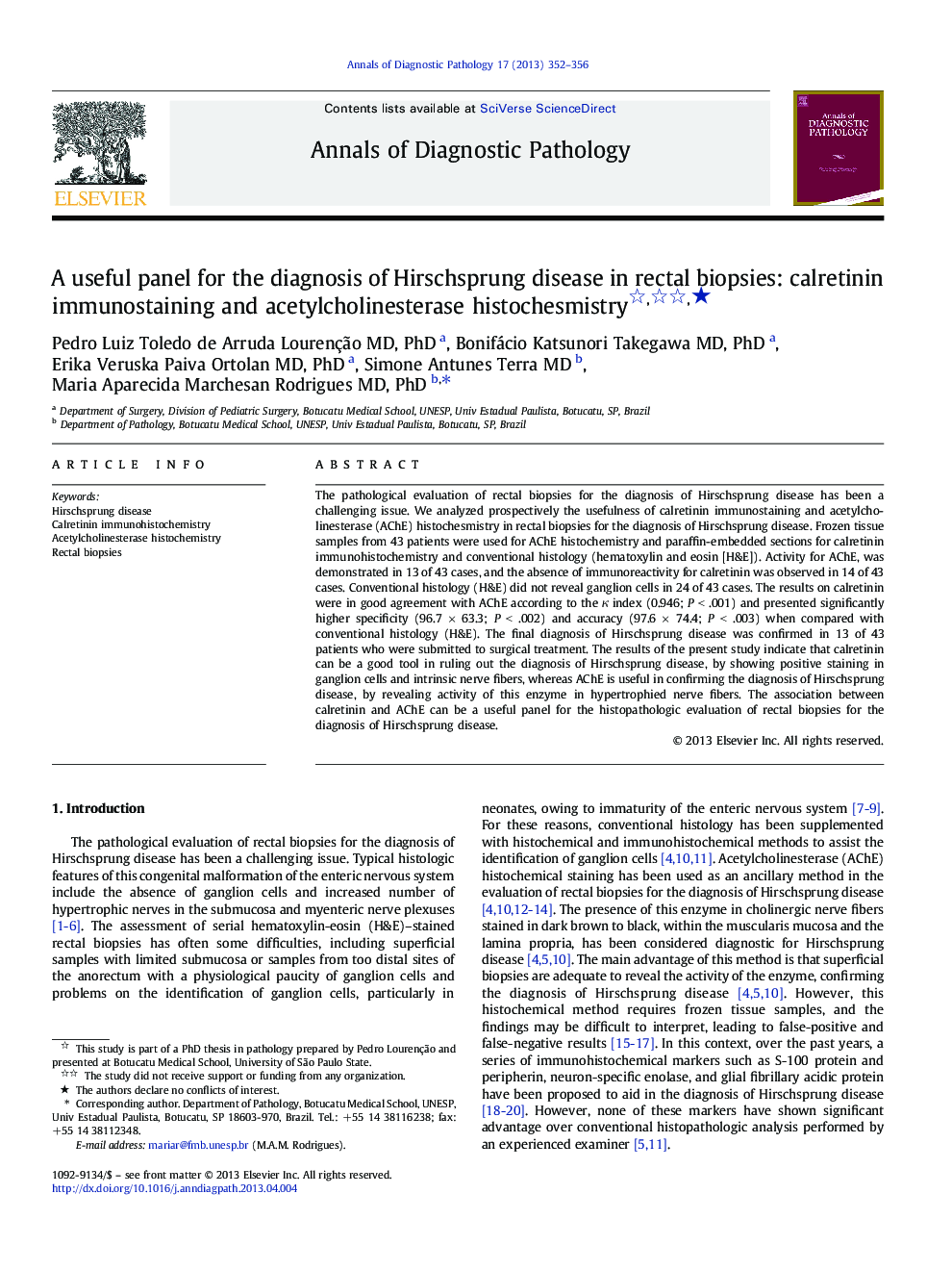| Article ID | Journal | Published Year | Pages | File Type |
|---|---|---|---|---|
| 4130204 | Annals of Diagnostic Pathology | 2013 | 5 Pages |
The pathological evaluation of rectal biopsies for the diagnosis of Hirschsprung disease has been a challenging issue. We analyzed prospectively the usefulness of calretinin immunostaining and acetylcholinesterase (AChE) histochesmistry in rectal biopsies for the diagnosis of Hirschsprung disease. Frozen tissue samples from 43 patients were used for AChE histochemistry and paraffin-embedded sections for calretinin immunohistochemistry and conventional histology (hematoxylin and eosin [H&E]). Activity for AChE, was demonstrated in 13 of 43 cases, and the absence of immunoreactivity for calretinin was observed in 14 of 43 cases. Conventional histology (H&E) did not reveal ganglion cells in 24 of 43 cases. The results on calretinin were in good agreement with AChE according to the κ index (0.946; P < .001) and presented significantly higher specificity (96.7 × 63.3; P < .002) and accuracy (97.6 × 74.4; P < .003) when compared with conventional histology (H&E). The final diagnosis of Hirschsprung disease was confirmed in 13 of 43 patients who were submitted to surgical treatment. The results of the present study indicate that calretinin can be a good tool in ruling out the diagnosis of Hirschsprung disease, by showing positive staining in ganglion cells and intrinsic nerve fibers, whereas AChE is useful in confirming the diagnosis of Hirschsprung disease, by revealing activity of this enzyme in hypertrophied nerve fibers. The association between calretinin and AChE can be a useful panel for the histopathologic evaluation of rectal biopsies for the diagnosis of Hirschsprung disease.
